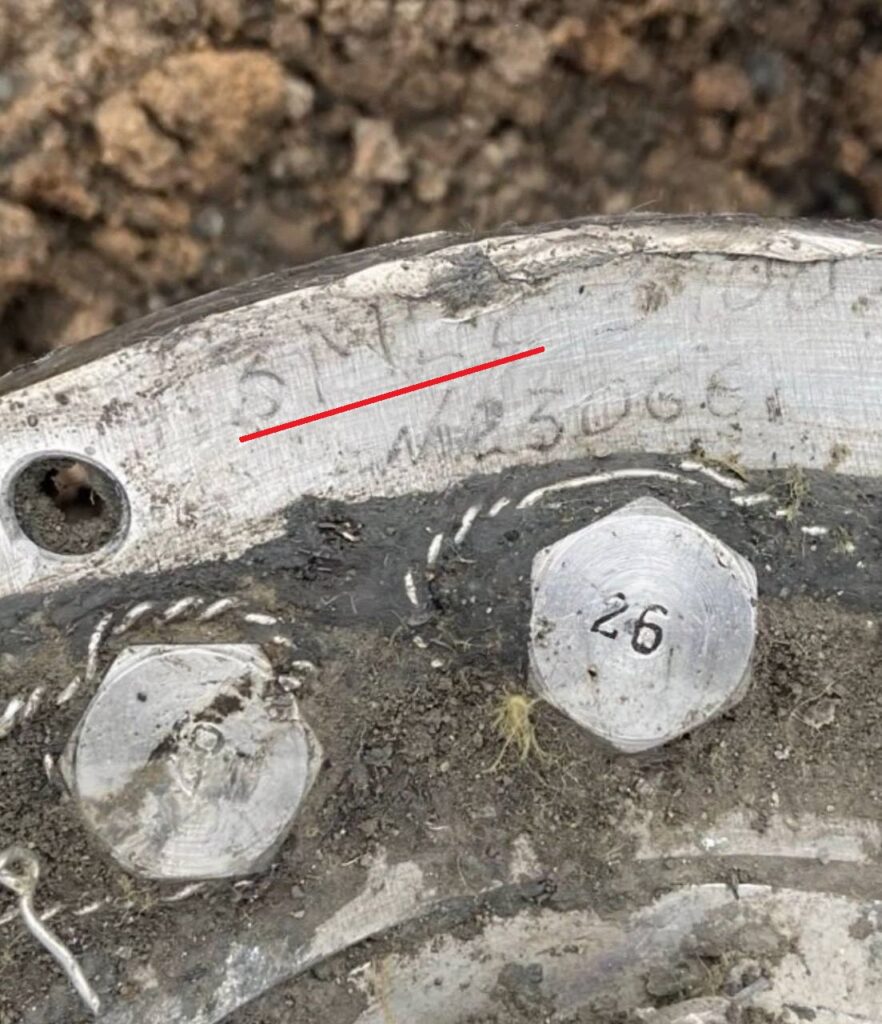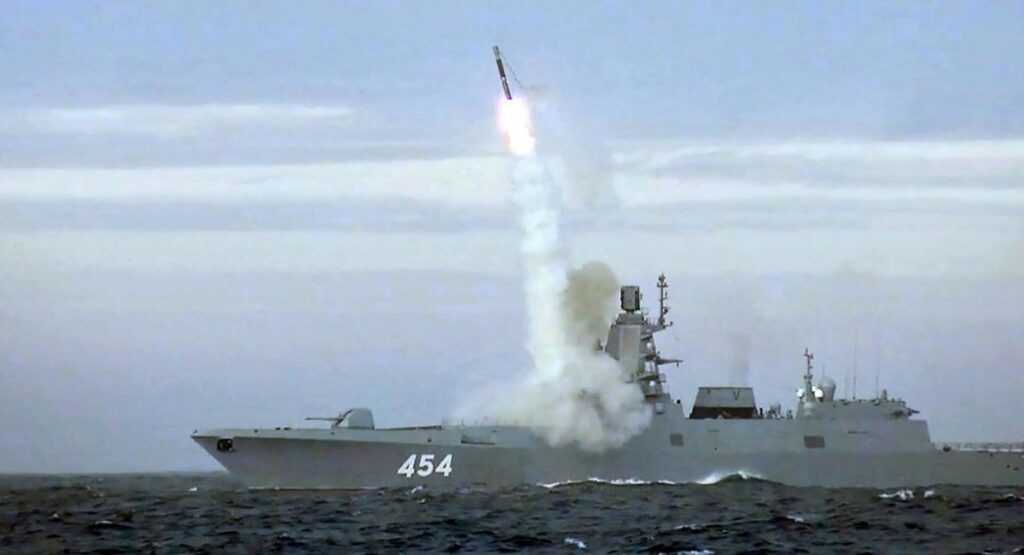The missile attack on Ukraine by the terrorist Russian Federation on 7 February was one of the most powerful of the year, killing dozens of civilians. However, it seems to have had one peculiarity that experts have noticed after a detailed examination of the wreckage of the intercepted missiles. It appears that Russia has begun to use the latest weapons, which its propaganda had previously described as “invulnerable”. This is the top-secret Zircon missile.
According to the designation system used in Russian military documents, this missile has a 3M22 index, and this designation was found on one of the fragments of the hulk that fell near a damaged power line in Kyiv. However, very little is known about the appearance and design of the Zircon. The Russian army got these hypersonic missiles to their disposal as late as 4 January 2023. It is known that it can fly at speeds of up to Mach 9 (over 11,000 km/h), with most of the flight taking place at an altitude of 30-40 km. Its range is up to a thousand kilometres, and the weight of the warhead is 300-400 kg. The missile is likely to be powered by a liquid-fuel direct-flow jet engine, which requires preliminary acceleration by additional solid-fuel boosters.

One of the fragments of the missile shot down over Kyiv on 7 February bears the marking “3M22“. Source: Defence Express
As a matter of fact, the Zircon was designed as a sea-based anti-ship missile, but with some modification, it could be used to attack land targets. Its carriers are the Admiral Gorshkov frigate (which test-fired this missile during exercises in November 2021) and several submarines, but they are all part of the Northern Fleet, meaning they are too far away to hit targets in Ukraine with missiles launched from them. Experts say that launches can also be carried out from specially converted mobile coastal defence complexes “Bastion” located in Crimea, or from the so-called “honeycomb” – a stationary launcher “Object 100” near Balaklava.
This missile can be considered “hypersonic” with certain reservations. Its manoeuvrability is limited, and when it approaches the target, it descends and slows down in the dense ground layers of the atmosphere, making it vulnerable to modern anti-missile systems such as the US Patriot. It is likely that this is exactly what happened over Kyiv on the morning of 7 February. It is safe to say that the power line was definitely not the target of the missile, the wreckage of which was found nearby, and thus it was driven “off course”.

The danger of the Zirkon missile, compared to, for example, the Kinzhal (Dagger) missile, which is similar in speed and warhead weight, is, firstly, that it has a longer range. Secondly, the Daggers are launched from MiG-31K aircraft, whose take-off is easily detected by radar and can warn of a missile threat. On the other hand, there are not many launchers for 3M22 in Russia, as well as missiles of this type, which are very expensive and difficult to manufacture. The state contract for their supply was signed in August 2021, although the aggressor state’s defence minister announced the start of mass production a year later.
Meanwhile, studies of the scrap metal that was once a “Russian weapon” indicate that similar missiles could have been used against Ukraine before, but we did not manage to find clear markings on them and identify them at least approximately. Obviously, this will be much easier since now.
The isolated use of the latest Russian missiles is a kind of a test for our missile defense and is not capable of changing the overall operational situation. Knowing the “accuracy” of our enemy’s missile weapons and the way they have been used in previous years, we can assume that they will continue to be used against large targets such as settlements and enterprises rather than purely military objects. Of course, all findings of such missile wreckage will be carefully studied by Ukrainian experts, as well as their colleagues from NATO countries, in order to improve countermeasures and tactics. For now, we can state that, unlike other types of missiles widely advertised by Russian propaganda, the aggressor decided not to inform us about the use of Zircon in advance — perhaps they just desired to impress us. If this is the case, then the impression was quite pleasant: we have once again seen that the formidable Wunderwaffles flying at us from the east and south cannot compete with modern Western weapons. Instead, our own Ukrainian developments sometimes really depress the “second army in the world”…
Earlier we wrote about the difference between ballistic and cruise missiles.

